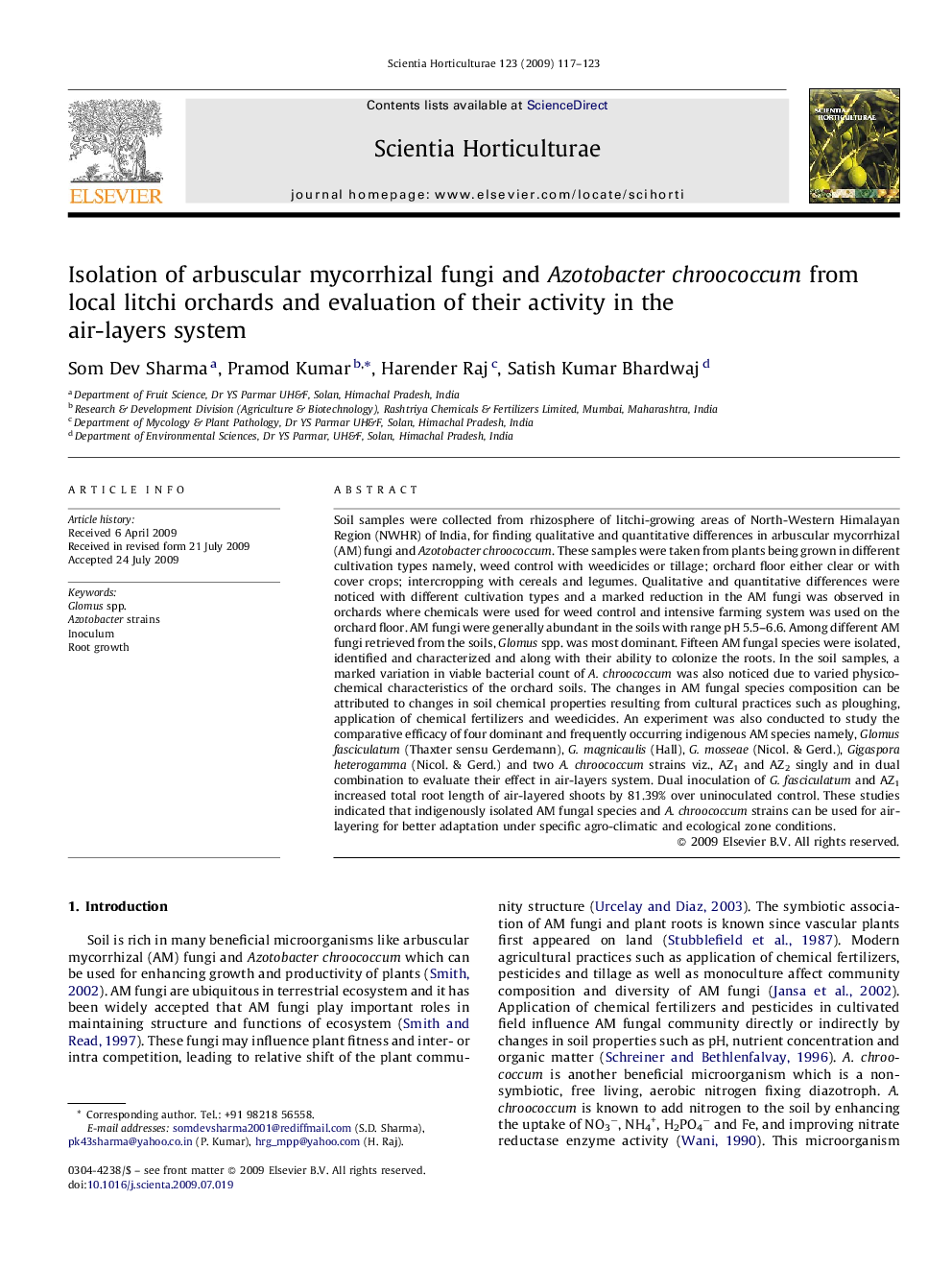| Article ID | Journal | Published Year | Pages | File Type |
|---|---|---|---|---|
| 4569005 | Scientia Horticulturae | 2009 | 7 Pages |
Soil samples were collected from rhizosphere of litchi-growing areas of North-Western Himalayan Region (NWHR) of India, for finding qualitative and quantitative differences in arbuscular mycorrhizal (AM) fungi and Azotobacter chroococcum. These samples were taken from plants being grown in different cultivation types namely, weed control with weedicides or tillage; orchard floor either clear or with cover crops; intercropping with cereals and legumes. Qualitative and quantitative differences were noticed with different cultivation types and a marked reduction in the AM fungi was observed in orchards where chemicals were used for weed control and intensive farming system was used on the orchard floor. AM fungi were generally abundant in the soils with range pH 5.5–6.6. Among different AM fungi retrieved from the soils, Glomus spp. was most dominant. Fifteen AM fungal species were isolated, identified and characterized and along with their ability to colonize the roots. In the soil samples, a marked variation in viable bacterial count of A. chroococcum was also noticed due to varied physico-chemical characteristics of the orchard soils. The changes in AM fungal species composition can be attributed to changes in soil chemical properties resulting from cultural practices such as ploughing, application of chemical fertilizers and weedicides. An experiment was also conducted to study the comparative efficacy of four dominant and frequently occurring indigenous AM species namely, Glomus fasciculatum (Thaxter sensu Gerdemann), G. magnicaulis (Hall), G. mosseae (Nicol. & Gerd.), Gigaspora heterogamma (Nicol. & Gerd.) and two A. chroococcum strains viz., AZ1 and AZ2 singly and in dual combination to evaluate their effect in air-layers system. Dual inoculation of G. fasciculatum and AZ1 increased total root length of air-layered shoots by 81.39% over uninoculated control. These studies indicated that indigenously isolated AM fungal species and A. chroococcum strains can be used for air-layering for better adaptation under specific agro-climatic and ecological zone conditions.
